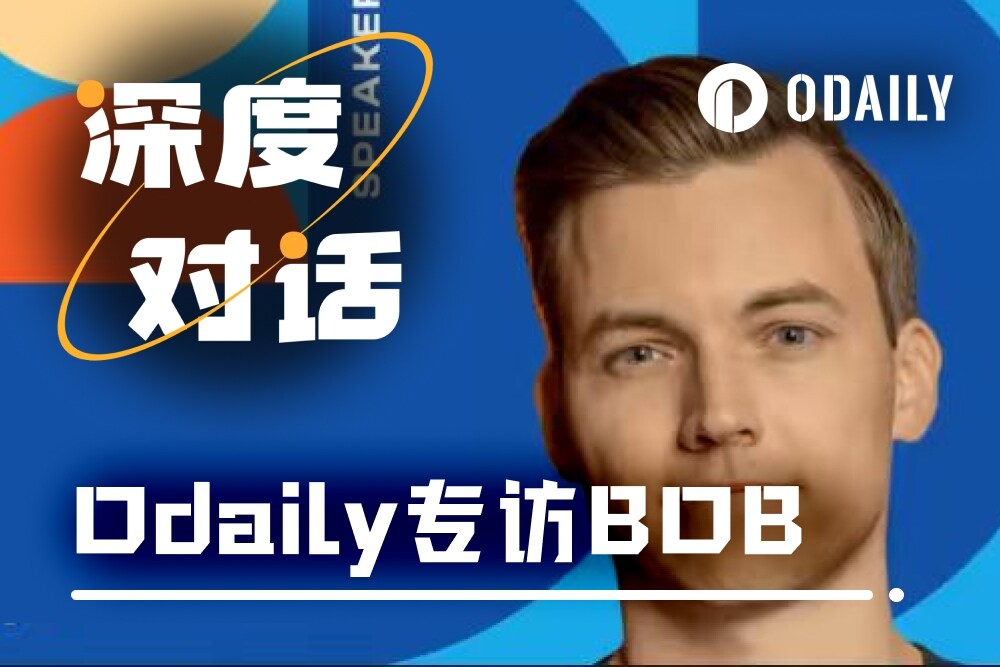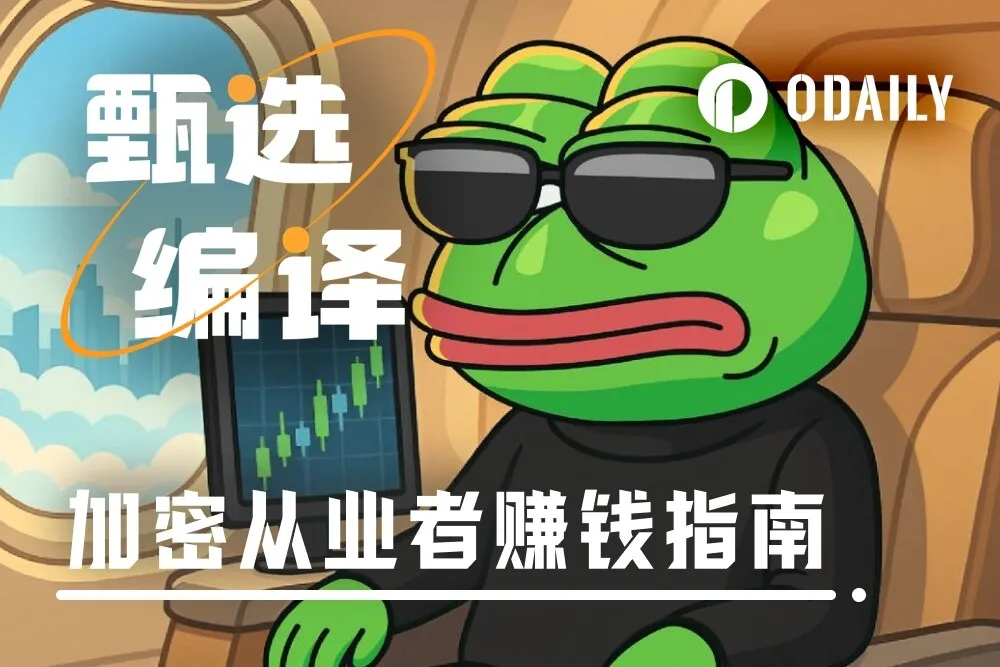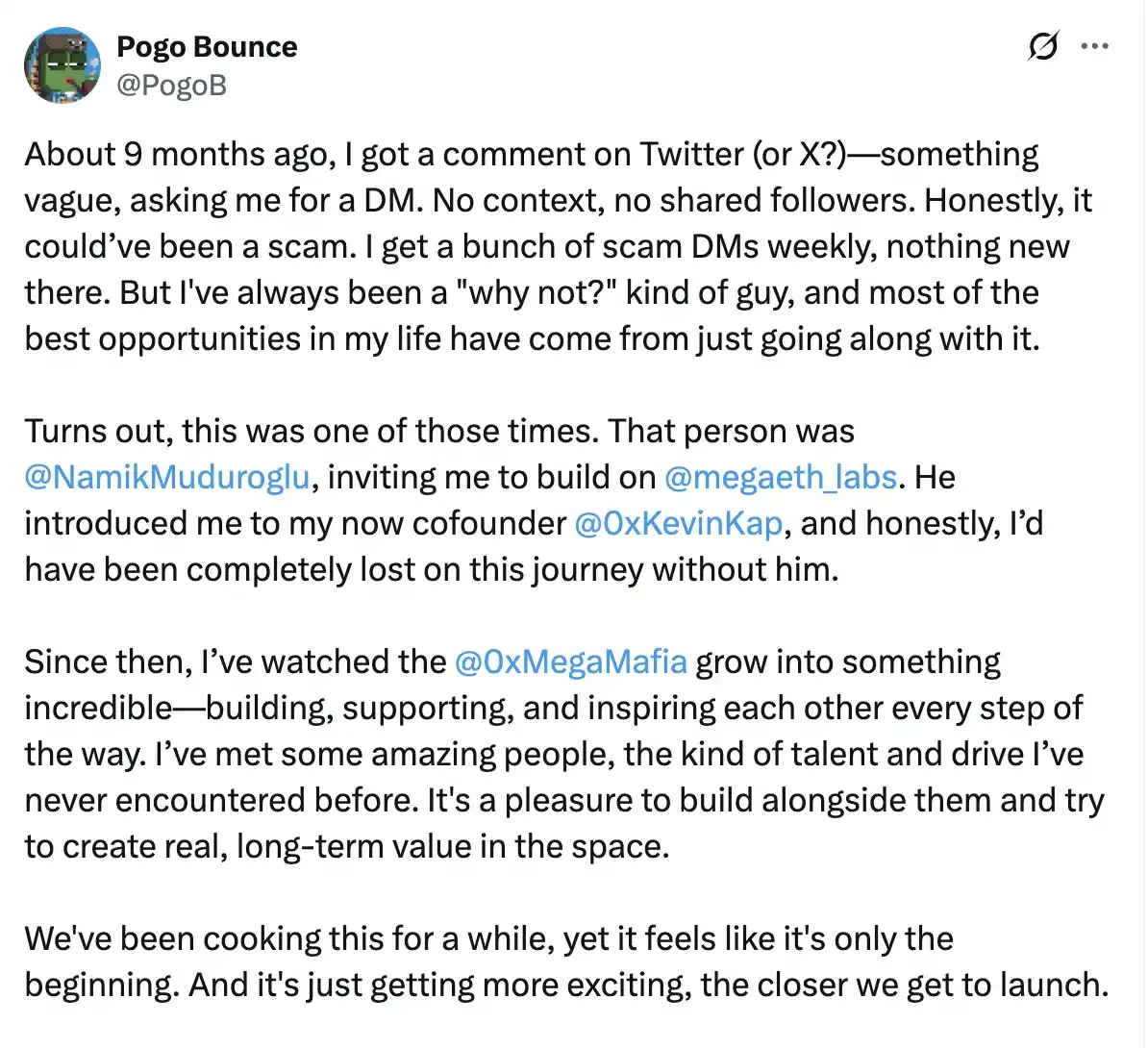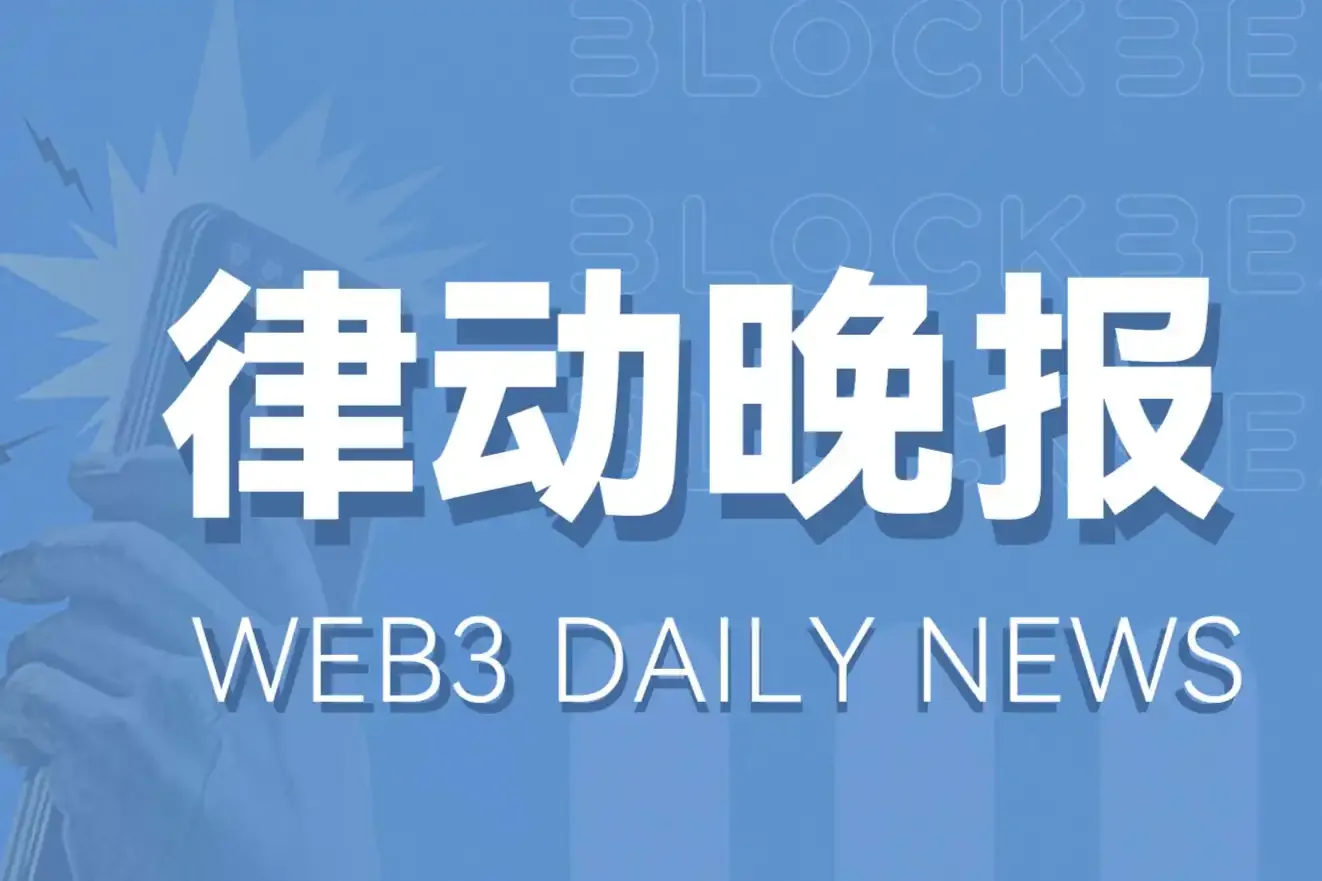Original | Odaily Planet Daily (@OdailyChina)
Author | jk

As the largest cryptocurrency asset in the world, Bitcoin has long lacked native DeFi infrastructure, with trillions of dollars in Bitcoin assets mostly "asleep." With the development of Bitcoin's layer two technology, how to safely and efficiently build a DeFi ecosystem for Bitcoin has become a focal point of industry attention.
BOB (Build on Bitcoin), as a leading Bitcoin layer two solution in the industry, is laying the groundwork for the large-scale adoption of Bitcoin DeFi through its innovative hybrid rollup architecture and BitVM technology. Since its launch over a year ago, BOB has achieved growth of 540,000 independent users, $1.7 billion in transaction volume, and $200 million in TVL.
In this exclusive interview, we delve into the current state of Bitcoin DeFi development, technical challenges, and how BOB is building a trusted Bitcoin DeFi infrastructure through partnerships with institutions with BOB co-founder Alexei. From the liquidity staking flywheel effect to cross-chain interoperability, from institutional-grade security to stablecoin ecosystems, Alexei paints a grand vision for Bitcoin DeFi.
Operational Status and Key Metrics
Odaily: Can you share the current operational data for BOB? For example, user growth, transaction volume, TVL, or other important milestones?
Alexei: BOB has been live for over a year now. We have 540,000 independent users interacting on-chain, and there's a particularly interesting statistic from Flipside Crypto, a major data provider in the crypto space: the user quality of BOB has reached 65%. This means that 65% of our users are engaging in multiple interactions with various applications—this is what we call true top-tier users.
In comparison, Solana and Base have only about 30%. Of course, the larger the chain, the more inactive users it attracts. But if you compare us to other new Bitcoin layer two projects, their quality user base is usually less than 10%.
This indicates that our strategy of collaborating with top-tier DeFi protocols and leading partners to build products that users genuinely care about is indeed effective. We are attracting not just users who click a button and leave, but those who are genuinely engaged in Bitcoin DeFi.
In terms of TVL, we currently have about $200 million in on-chain deposits, and it continues to grow. With the launch of more top-tier DeFi integrations, we expect to see more funds flowing in.
As for the trading volume on Bob DEX, in the first year we processed over $1.7 billion in transaction volume. Considering we are just getting started, this number is quite impressive.
Regarding key milestones, we successfully deployed BitVM on the testnet with institutional partners. We not only built it but also had large institutions operate the BitVM operation nodes. This ensures that when our native Bitcoin bridge goes live, it won't be just BOB operating it—users would have to trust us—but rather some of the largest institutions in the industry will be operating it. This provides the necessary trust foundation to accelerate the adoption of truly trustless Bitcoin DeFi.
BOB is the first hybrid ZK rollup, achieving maximum efficiency through ZK proofs. We have prepared Bitcoin staking on the testnet, so in the first year, we have fulfilled all our technical commitments and even exceeded them.
One of the most exciting products we just launched is Bob Gateway, which we announced yesterday in collaboration with BitGo and LayerZero. We provide instant direct access from native Bitcoin to 11 different chains, allowing the 15,000 applications on these networks to offer instant Bitcoin deposit and withdrawal capabilities. This is a capability they have never had before, enabling them to attract new Bitcoin users while making it easier for those with BTC in hardware and cold wallets to access DeFi without having to figure out different bridges and interfaces.
The chains we currently support include Ethereum, Base, BNB, Sonic, Avalanche, Unichain, and Berachain—all of which are among the largest DeFi participants globally.
Addressing Bitcoin DeFi Liquidity Challenges
Odaily: What is BOB's roadmap for addressing the liquidity challenges in Bitcoin DeFi? What specific plans do you have?
Alexei: I think it's necessary to start with the macro vision and explain why we are building all these technical solutions. The main issue with Bitcoin DeFi is that Bitcoin itself does not have native yield—there is no DeFi infrastructure on Bitcoin.
If you want to use Bitcoin in DeFi, you have to figure out which of the 50+ wrapped Bitcoin options to use and which chains support which options. This complexity is too risky for many users. Our long-term goal is to provide native yield while achieving trust-minimized Bitcoin DeFi.
In terms of native Bitcoin yield, we are building a hybrid chain that combines the security of Bitcoin with the DeFi primitives of Ethereum. We are about to launch Bitcoin staking and a native BitVM bridge. This addresses security concerns and provides Bitcoin with DeFi capabilities that people can trust.
But what truly unlocks growth potential is what we call the "Bitcoin liquidity staking flywheel effect." We know that staking has already found product-market fit on Ethereum and Solana, with liquid staking tokens representing billions of dollars in the market, such as projects like Lido. Now this is happening on Bitcoin.
This flywheel works like this: the more BTC staked, the more Bitcoin converted into LST (liquid staking tokens) and used in DeFi. More DeFi activity means more liquidity, more trading volume, and thus more fees generated. Higher fees mean better staking rewards, which attract more Bitcoin, creating more trading volume and fees—this is a self-reinforcing cycle that can make Bitcoin DeFi larger than anything we see on Ethereum.
The challenge is how to kickstart this flywheel. Only BOB can generate sustainable income because this income is the staking rewards for Bitcoin stakers. We guide our ecosystem in two ways:
First, we provide the best Bitcoin yield on BOB through vault strategies, allowing users to easily deposit BTC with trusted DeFi institutional participants. These institutions can generate yield both on BOB and across other chains and off-chain, democratizing yield strategies that were previously only available to funds. Users receive yield-generating LSTs that can be used as collateral for trading.
Second, we focus on exchange and cross-chain functionality. Every major chain and application wants access to Bitcoin DeFi, and they are all competing for it. We provide this access capability, allowing users to move from Bitcoin to different chains, and we plan to add direct DeFi deposit functionality so that users can enter lending and exchange positions directly from Bitcoin, efficiently trading with stablecoins and other assets.
The larger the Bitcoin DeFi trading volume on these networks, the more revenue BOB as a chain generates. This allows us to create sustainable income and use it as staking rewards to guide the native BOB LST, which will attract millions or even billions of dollars in dormant Bitcoin liquidity through our more conservative staking model.
We are essentially leveraging active DeFi yield hunters holding BTC to drive DeFi activity, while providing attractive products for more conservative users.
BOB's New Product: One-Click Access to Major L1s
Odaily: Regarding the new product Gateway, what significance and potential impact does it have for different participants in the Bitcoin ecosystem—users, validators, and other roles?
Alexei: Bob Gateway opens up new opportunities for three key groups:
For users: Millions of Bitcoin users can now deposit their Bitcoin into all these different chains' DeFi with just one transaction. One-click access to Unichain, one-click access to Base—super simple and direct, helping users get in and out of DeFi faster.
For applications: DApps can now directly receive Bitcoin deposits, attracting a whole new user base. Previously, you were competing for the same Ethereum and Solana DeFi users. If you wanted to accept Bitcoin, you had to tell users they could use wrapped BTC, but they had to figure out where to buy it. Now you can simply say "deposit Bitcoin"—it's like having Bitcoin deposits in addition to traditional fiat deposits.
For validators and node operators: The system operates on the Bitcoin intent protocol. BOB Gateway is actually the first trustless Bitcoin intent protocol. We know intent networks are very popular and represent the biggest innovation in EVM chain and layer one network interoperability. We built this specifically for Bitcoin.
This allows solvers to provide Bitcoin capital to meet user requests while rebalancing and generating returns on Bitcoin by providing this service. Running nodes and solving routing can actually generate income through routing fees, creating both infrastructure opportunities and economic incentives.
Institutional-Grade Security and Regulated Custody
Odaily: How should we understand the impact of institutional and regulated custody in the current market context?
Alexei: We discuss a lot about solving the issues of native Bitcoin yield and native Bitcoin deposits, which require a lot of new technology. However, trust is largely about perception; not many people will immediately trust new technology.
If I build something and claim it is secure, how do you verify its security? Unless you understand BitVM Bitcoin scripts and can audit the code, you still have to trust me, and building that trust takes time. You need more technically savvy people to check, trust, and build a community around this technology.
The beauty of technological innovation is that the longer it runs successfully, the more trustworthy it becomes, as a larger community validates its security. But Bitcoin DeFi cannot wait 10 years to complete this natural trust-building process.
This is where we combine innovation with institutional-grade security. We bring in the most trusted custodians, validators, and institutional staking providers to convince them that BitVM and native Bitcoin staking represent significant innovations. When they operate these nodes and infrastructure, users can think, "I may not understand this technology, but I trust these custodians and institutions won't steal my money. I believe they have done their due diligence."
Today, when people use wrapped BTC in DeFi, they trust BitGo, and many feel comfortable with that trust. Currently, there are $40 billion worth of Bitcoin wrapped tokens in DeFi. Our approach means that if you trust these institutions, the same institutions will operate BOB's trustless bridge. This allows users to believe that the technology is mature and operated by trusted entities, making adoption much easier than relying on anonymous node operators.
Most Bitcoin holders want non-custodial Bitcoin products—they want to keep Bitcoin as Bitcoin, use it to borrow stablecoins, but do not want to deal with bridge issues. Currently, this can only be achieved through institutional custody, where large Bitcoin holders store their Bitcoin with the custodians they trust the most.
By collaborating with custodians like FireBlocks and Cobo—including Anchorage Digital, which is a member of our institutional working group—we can gradually bring conservative Bitcoin holders into Bitcoin DeFi. This pragmatic approach of collaborating with institutions rather than against them is crucial.
When I started researching Bitcoin, I initially criticized wrapped BTC, but later understood that BitGo did not want to steal Bitcoin—they wanted to build the best solution on the market. Our goal is not to replace them but to work with them to provide better, trust-minimized solutions because they also want to offer the safest products for users.
Challenges Facing Bitcoin Layer Two
Odaily: What do you see as the biggest challenges for BOB and other projects in the Bitcoin ecosystem, such as Bitcoin layer two networks, in terms of technical barriers and other aspects?
Alexei: One major challenge is managing expectations. Bitcoin layer two has become extremely hot. We might be one of the earliest teams that sought investors years ago, trying to convince them that Bitcoin layer two would succeed. When we announced BOB, there was no one else in the market. Then, within a few months, suddenly 80 Bitcoin layer two projects appeared.
A lot of funding has been raised, but not everyone has the technical expertise. Many teams are just following the narrative without delivering, which leaves a bad impression on the market. We must remember that it took Ethereum five years from the first rollup design to the first real Ethereum rollup going into production. And from BitVM2—our paper co-authored with Robin, which demonstrated how to build native bridges and rollups—to now, only a year has passed.
Despite only being a year, we have been running on the testnet and making rapid progress, but this is new technology that requires time for auditing and proper construction. Some teams have made promises that they will never be able to fulfill, which has always been a challenge. Now people see teams like BOB actually delivering, along with other strong technical teams, and we are rebuilding trust.
The biggest challenge is not actually technical—we know how to build. The biggest challenge is balancing technological innovation with what users really want. We need to focus on user experience, convincing not only crypto-native projects to adopt BitVM and Bitcoin products but also persuading new participants, such as new banks and fintech companies—those Web 2.5 projects that have millions of users with Bitcoin but don’t know how to use it.
This requires making products very secure, reliable, and simple while maintaining trustless standards. Combining security with user experience often involves trade-offs, as they frequently lie at opposite ends of the spectrum. However, this challenge represents the greatest opportunity.
I believe there are no real obstacles to the future of Bitcoin DeFi. We have already laid out the blueprint. Teams that are principled, building not just for technology but for products, engaging with users, and closely collaborating with institutions and retail users will succeed. This may represent the biggest opportunity in the DeFi space over the past decade.
Another challenge is that Bitcoin and Bitcoin institutions move slowly. In the crypto space, we are used to the startup mindset of rapid innovation, but in the Bitcoin space, we are dealing with the largest market. Convincing major players with millions of users to try new technologies takes time. However, once successful, you will be bigger than everything else. If you win on Bitcoin, you win the entire crypto market, likely larger than some Web 2.0 institutions.
We see progress moving very quickly by Bitcoin standards, with Bitcoin layer two developing at an unprecedented pace. But this is still Bitcoin—I cannot simply fork it. We must work within existing conditions, and it must be extremely secure. The worst thing we could do is launch an unfinished BitVM and then get hacked because once a problem arises, people will lose trust in the entire technology, which would be devastating for the industry.
Security is our primary product, which means we must prioritize building security with discipline, making it challenging to move forward at maximum speed while balancing these requirements.
Stablecoins in the Bitcoin Ecosystem
Odaily: Stablecoins are a hot topic right now. Do you think the Bitcoin ecosystem needs stablecoins, or should they be transitioned from other ecosystems?
Alexei: The Bitcoin ecosystem absolutely needs stablecoins. While I can't disclose details yet, BOB has been collaborating with some of the largest stablecoin providers to unleash the network effects between Bitcoin and stablecoins.
The primary use case for Bitcoin DeFi today is using Bitcoin as collateral to borrow stablecoins, and major stablecoin participants are formulating Bitcoin strategies. This is a key part of BOB's roadmap—without stablecoins, you cannot build DeFi for Bitcoin. It simply cannot scale.
Consider this: Bitcoin is larger than all other cryptocurrencies combined. If you want to build DeFi for Bitcoin and generate yield, the rest of the cryptocurrencies are smaller. The only way to scale is to introduce stablecoins.
We are seeing several developments:
Institutional Stablecoins: There will be institutional stablecoins on the BOB chain through native integrations. I can confirm this will happen, but I cannot disclose the partners yet.
Bitcoin-Backed Stablecoins: Many DeFi projects are building Bitcoin-backed stablecoins using different Bitcoin LSTs as collateral, creating attractive yield-generating DeFi products.
Institutional Bitcoin-Backed Stablecoins: We will see Bitcoin-backed institutional stablecoin projects collaborating with custodians and major ETF participants, allowing them to mint stablecoins using Bitcoin as collateral. Several major players are actively exploring this space.
You have Circle, Tether, and other institutional dollar stablecoins—why shouldn’t there be institutional Bitcoin-backed stablecoins? While DeFi CDP models like MakerDAO cater to DeFi users, we need products that are also attractive to institutions.
Look at the growth of BOB's TVL; the recent growth has been primarily driven by Bitcoin-backed stablecoins—this is the fastest-growing DeFi use case we are seeing.
Vision for the Asian Market
Odaily: Is there anything else you would like to share with our readers and insights into the Asian market?
Alexei: Bitcoin has always held a significant position in the Asian market. Bitcoin mining, innovation, and adoption largely originated in Asia. For us, it is crucial to build strong relationships, provide attractive products for Asian users, and learn how people interact with BTC, understanding their needs and concerns.
This is why we frequently attend conferences in places like Singapore and South Korea, and we are establishing local teams in these countries. We need to learn, understand, and collaborate with institutions and local participants to help them formulate Bitcoin strategies.
We are not trying to change how people use Bitcoin—we want to understand their needs, become partners in Bitcoin, and collaborate with trusted major players to realize the vision of Bitcoin DeFi.
Our mission is to create equally successful strategies in a decentralized manner, and we look forward to expanding our partnerships in the Asian market.
免责声明:本文章仅代表作者个人观点,不代表本平台的立场和观点。本文章仅供信息分享,不构成对任何人的任何投资建议。用户与作者之间的任何争议,与本平台无关。如网页中刊载的文章或图片涉及侵权,请提供相关的权利证明和身份证明发送邮件到support@aicoin.com,本平台相关工作人员将会进行核查。




